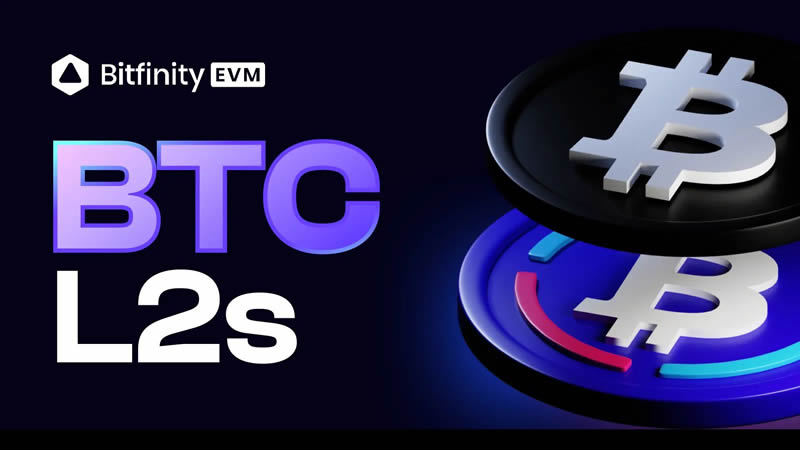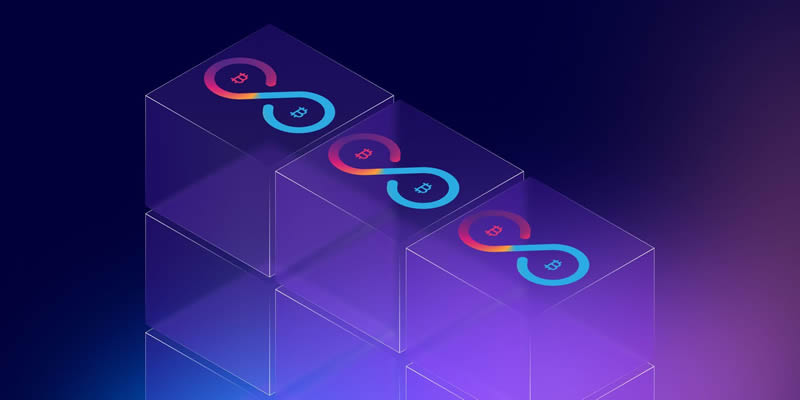Bitcoin Layer 2 project Bitfinity recently announced that it has successfully raised a total of US$7 million in funding. Investors in this round include Polychain Capital, ParaFi Capital, Warburg Serres, Dokia Capital and Draft Ventures. The funding was raised in two parts, first a seed round of approximately $1 million in 2021, and secondly a growth round completed in June last year. Both rounds of financing used token financing, valuing Bitfinity at $130 million. This financing will provide strong support for Bitfinity’s development in the Bitcoin Layer 2 field.
Bitfinity is currently in the testnet stage and plans to launch the mainnet later this month or early February. Max Chamberlin, co-founder of Bitfinity, revealed that the announcement of the financing is intended to arouse excitement and attention before the official launch of the mainnet. As an emerging Bitcoin Layer 2 solution, the development of Bitfinity is closely related to EVM technology.

Bitfinity Network EVM is a blockchain based on Internet Computer (IC), which uses Solidity language and is compatible with Ethereum. Through IC's unique architecture and Chain Key technology, Bitfinity Network EVM's on-chain storage capacity and processing speed are more efficient than traditional EVM implementations on other blockchains, without paying gas fees. This allows developers to use the familiar Ethereum programming environment to create decentralized applications (dApps) that can interact with Bitcoin, opening up a host of new applications and use cases for Bitcoin. With Bitfinity, developers can deploy Bitcoin, Ordinals, and BRC-20 smart contracts written in Solidity, which will help increase Bitcoin’s utility, especially in the DeFi space where Ethereum has long dominated.
Bitfinity Network EVM’s architecture consists of four key components:
The EVM API container acts as the entry point to the system, similar to the smart contract container on the IC. It receives requests from Ethereum clients and IC proxies and batches these requests into a pending transaction pool.
After the EVM API batches requests into the pending transaction pool, the EVM execution container processes the transactions and updates the global EVM state, updating the Blockchain container at the same time.
Blockchain container is a storage unit containing the Ethereum chain block structure. They are stored in stable storage containers, called ICs. Currently the capacity of each container is limited to 48GB, but the project plans to increase the storage capacity to 1TB. In this way, InfinitySwap will be able to save all data on its chain in one container.
The signature verification container is used to verify the signature of Ethereum transactions. This task is computationally expensive and therefore executed in a dedicated container pool to avoid excessive computational burden in the EVM API containers.

By performing signature verification and transaction batching to optimize transaction throughput, the Bitfinity Network EVM performs faster than the Ethereum main network EVM. These optimizations have a high overhead due to encryption and IO operations. Bitfinity Network EVM is entirely on-chain, with code and data executed in web assembly. Web assembly is a single-threaded execution environment, and its parallel computing is implemented through a multi-canister architecture. This is why Bitfinity Network EVM can run quickly.
In addition, Bitfinity Network EVM has been fully tested and has high core module coverage. The Retest integration test suite is used to ensure correct execution of the JSON RPC interface and EVM. Bitfinity Network EVM uses existing stable repositories such as REVM, Retest, canister-sdk and IC to fully leverage existing Ethereum libraries.
Bitfinity Network EVM also plans to integrate Ethernet and other EVM compatible chains by running a light client on the IC, which will require changes to the network protocol in order to interface with all nodes on other chains and synchronize the entire zone Blockchain. It supports connecting ICRC-1 tokens and ERC777/ERC20 tokens, as well as Bitcoin as an ICRC-1 token.
In terms of tokens, BITFINITY is an official project governance token approved by Bitfinity DAO. It is also the native token of Bitfinity EVM. It has a total supply of 1 billion and is an ERC-20 token. The distribution rules are as follows:
Community Treasury 20%
Governance DAO 35%
Long-term Incentive 16%
Seed round 5%
Growth round 8%
Growth and flow Sexuality Programs (16%)
Grants 3%
Growth and Partnerships 3%
Lock 10% liquidity
The above is the detailed content of An article to quickly understand the Bitcoin Layer 2 project Bitfinity, supporting Ethereum EVM. For more information, please follow other related articles on the PHP Chinese website!
 Common Linux download and installation tools
Common Linux download and installation tools
 Detailed explanation of method_exists
Detailed explanation of method_exists
 Usage of embed tag
Usage of embed tag
 What to do if the embedded image is not displayed completely
What to do if the embedded image is not displayed completely
 What are the free crawler tools?
What are the free crawler tools?
 The difference between distributed and microservices
The difference between distributed and microservices
 Data Structure and Algorithm Tutorial
Data Structure and Algorithm Tutorial
 Usage of distinct in SQL
Usage of distinct in SQL




